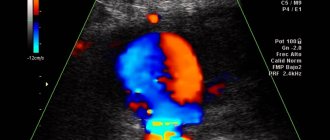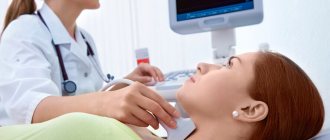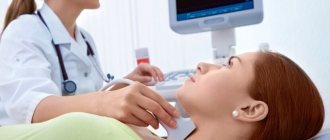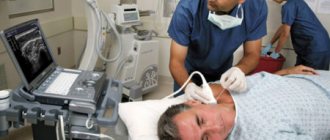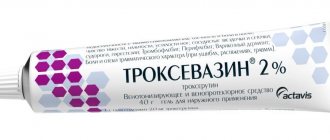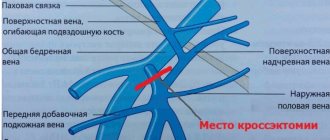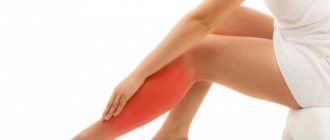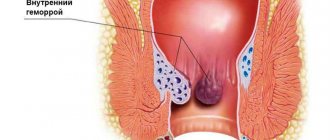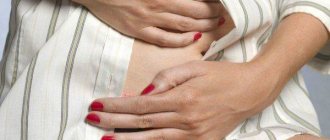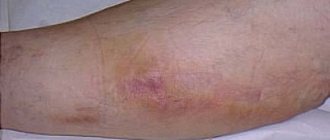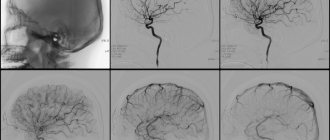Varicose veins are not a hindrance to beauty
There is no need to abandon the cosmetic procedure: many modern techniques for removing unwanted hair on the legs are not contraindicated for varicose veins in the initial stage. However, it is important to choose the right technique that will not harm your health if the first signs of the disease have already made themselves felt. The best way to protect yourself is to first consult with a phlebologist, who will determine the presence and stage of development of varicose veins and give professional recommendations.
Prohibitions for varicose veins, which are important to know about
When treating any disease, we are faced with the need to take certain medications, maintain a proper diet or diet, and also receive recommendations from the doctor on what can and cannot be done. Today we’ll talk about the prohibitions for varicose veins of the lower extremities, which are important for everyone to know about.
1). The first prohibition concerns bad habits (smoking and alcohol).
It’s not for nothing that a phlebologist asks about this during a consultation. Varicose veins are still a completely unknown disease, but it is known for sure that disruption of the venous system occurs as a result of an incorrect lifestyle. Smoking leads to the destruction of the walls of venous and arterial vessels, making them fragile and brittle. And cholesterol plaques are deposited on the walls of the arteries, which gradually lead to complete occlusion (closure) and disruption of blood flow in the extremities leading to ischemia and tissue death (gangrene). Alcohol and smoking thicken the blood, which causes blood clots to form. Alcohol also retains fluid in the tissues, which leads to the formation of edema and overload of the venous system.
2). Overweight.
Many diseases are aggravated by obesity and varicose veins are one of them. Excess weight makes a person less mobile (you want to lie down and relax more) and this is not accidental. First of all, there is a colossal load on the legs. The joints suffer; they fail most quickly, making a person even more hypodynamic. As a result of limited movement in the legs, the functioning of the venous pump in the legs is disrupted. The blood in the veins begins to stagnate - this all leads to varicose veins. What to do if you are already obese? There are four rules:
- Drink about 1.5 - 2.0 liters of clean filtered water to thin the blood.
- Fractional meals (eat in small portions about 5 - 6 times a day).
- Don't eat at night.
- Eating foods enriched with fiber. They normalize intestinal function, improve metabolism and help fight excess weight (buckwheat, pearl barley, bran, lentils, beans, pumpkin, cabbage, apples, apricots, etc.).
3). Use of hormonal contraception.
Hormonal contraceptives for varicose veins expose the female body to significant risk. The increased content of female sex hormones in the blood leads to increased pressure on the blood vessels, leading to their dilation. Also, under their influence, the blood becomes thick, which can lead to the formation of blood clots.
4). Baths, saunas, solariums (exposure to high temperatures).
Under the influence of high temperatures, there is an increase in blood flow to organs and tissues, increased sweating, all this is necessary to cool our body and protect it from overheating. Accordingly, as the flow of blood increases, its outflow also increases. Which leads to excessive strain on the veins. If the latter are varicose and the venous outflow through them is already impaired, this leads to their even greater expansion and even greater stagnation of blood. Increased sweating dehydrates the body and leads to blood thickening, which in turn leads to thrombosis. This is also why varicose veins most often worsen in the summer.
5). Sedentary lifestyle.
Technological progress and computerization provide people with comfort in everyday life. You no longer need to go to the store - you can buy everything online without leaving your home. A century of physical inactivity leads to a sedentary lifestyle. With varicose veins, the blood in the diseased veins cannot rise on its own due to non-functioning valves. Such veins have difficulty pumping blood to the heart, and in advanced stages they generally look like bags filled with blood that is not flowing anywhere. In order to force the blood to rise through such veins, you need to force the muscles to work. It’s not for nothing that they say that our muscles on the lower leg (muscle pump or muscle pump) are a second heart. The muscles on the lower leg, contracting, massage the adjacent veins, squeezing them and forcing the blood to move upward through the vessels, causing the venous valves to work better. This is why walking is beneficial for varicose veins in the legs.
6). Self-medication.
As the song says: “If you don’t have an aunt, then you won’t lose her.” But if you have varicose veins, the disease itself will certainly not go away. Tablets and ointments only reduce the symptoms of the disease, facilitate the flow of blood through the veins, relieve inflammation, and relieve swelling. That is, they improve the quality of life with varicose veins, but do not affect the cause of the disease. There are no magic cures for varicose veins. Self-medication is not only harmful, but also dangerous. Mechanical damage to valves and varicose veins is unfortunately not a reversible process that requires surgical intervention. If you have signs of varicose veins, you should consult a doctor. Therefore, do not hesitate to visit a phlebologist. Just like with caries on a tooth, no matter how much you apply garlic to your wrist for a toothache, we understand that you will still have to go to the dentist, drill the tooth and put a filling.
7). Leeches and varicose veins.
Varicose veins cannot be cured with leeches. Hirudin released in the saliva of these blood-sucking animals actually reduces blood clotting, but this has no effect on varicose veins. This treatment does not strengthen the venous walls and does not normalize the condition of the blood vessels. I often use leeches repeatedly, which leads to infection with various infections (cases of infection with hepatitis C and B are not uncommon). You should also not place leeches on swollen varicose veins - this can lead to rupture of the vessel and bleeding.
8). Massage for varicose veins.
It all depends on the massage technique used. For varicose veins, only a soft, stroking massage aimed at draining blood and lymph from the extremities is possible. Powerful massage techniques for varicose veins are harmful (honey, cupping, vacuum, anti-cellulite). The use of pneumocompression is useful - this is a special type of physiotherapeutic treatment in which, with the help of a pump and inflatable boots, it is possible to improve the outflow of blood and lymph through the vessels.
9). Exercising with varicose veins.
It is clear that sports activities and varicose veins are two opposites. All loads in a vertical position must be excluded. Among those prohibited: deadlifting (lifting weights in a vertical position), running (sprinting, marathon), squats, lunges, jumping (especially on a skipping rope), exercises with a platform (step aerobics). All of the above increases the load on varicose veins and can lead to thrombosis. With varicose veins, fitness is still necessary to increase the tone of the veins and strengthen their walls. If you have varicose veins, then fitness classes should be carried out with an experienced instructor and using compression stockings. The following exercises are allowed: flattening, lying leg raises, bicycle exercise, swinging legs back in a knee-elbow position, lying leg press, calm walking on a treadmill.
A diagnosis of varicose veins does not mean the end of a healthy life. Varicose veins are a chronic disease that can be treated surgically. Open, traumatic operations to remove veins are a thing of the past. Today, varicose veins are treated all over the world using minimally invasive techniques and laser technology. If surgery is recommended for you, it should not be put off for too long. Over time, the condition of the veins deteriorates, complications appear in the form of inflammation of the vein walls and the formation of blood clots (varicothrombophlebitis), severe edema, night cramps, as well as deterioration in the nutrition of the skin of the legs, leading to the formation of chronic trophic ulcers. That is why, if a phlebologist recommended that you have surgery now, you should not postpone it until later.
Be healthy!
Make an appointment with a phlebologist surgeon
Surgeon-phlebologist - Andrey Aleksandrovich Nisin
You can make an appointment by calling (391) 205−00−48 or through your personal account
How can you remove hair on legs with varicose veins?
- Shaving with a machine, or depilation “the old fashioned way”, when the top part of the hair is cut off, without affecting the hair follicles. It is important to perform the procedure very carefully so as not to damage the skin.
- Chemical hair removal using depilatory cream.
- Laser hair removal for varicose veins in the early stages is also not contraindicated. Laser treatment of hair follicles gives long-term results. The laser technique uses an additional cooling system, so the skin does not overheat.
- Photoepilation is a modern non-invasive method that does not violate the integrity of the skin. The light pulse acts with high temperature on the follicle pointwise, no deeper than the dermal layer, under which the vessels are located. The initial and first stages of varicose veins are not a contraindication for the photoepilation procedure.
- Electrolysis can be done at the initial and first stages of varicose veins. The technology involves inserting a special needle into the root of each hair and applying an electric current.
Is it possible to do ELOS hair removal for varicose veins? Here the opinions of experts differ, so a preliminary visit to a phlebologist will not be superfluous. The method combines 2 types of activity – light and radio frequency. Thermal effects are not selective and affect adjacent skin. And, despite the fact that there is an additional skin cooling system, the procedure itself is painful; painkillers are required. This should also be taken into account before the procedure and the cosmetologist should be warned about the presence of varicose veins.
Modern anticoagulant therapy for atrial fibrillation
Magazine "Remedium" No. 11–12, 2021
DOI:
10.21518/1561-5936-2020-11-12-28-30
Nadezhda Kalinina,
RM Analytics
Atrial fibrillation (AF) is diagnosed in approximately 2% of people in the general population, and its prevalence is steadily increasing due to the aging population. The most severe complication of AF is stroke, the risk of which can be significantly reduced by taking oral anticoagulants [1].
Modern anticoagulant therapy in atrial fibrillation patients
Nadezhda Kalinina,
“RM Analytics”
The atrial fibrillation (AF) is detected in almost 2% of the general population, and its prevalence is continuously rising as the population is aging. Stroke is the most severe complication of AF and its risk can be significantly reduced by using oral anticoagulants [1].
Until recently, warfarin was practically the only option for long-term anticoagulant therapy in patients with non-valvular AF and venous thromboembolic complications, as well as other diseases that necessitate long-term use of anticoagulants. However, the use of warfarin in clinical practice is complicated by numerous drug and food interactions, as well as the need for constant monitoring of coagulation parameters. The presence of these significant disadvantages in warfarin therapy has prompted the scientific community to create an alternative to warfarin. This is how direct oral anticoagulants (DOACs) were created, which at the moment, according to the 2021 clinical guidelines for AF, are first-line drugs for non-valvular atrial fibrillation [2]. Drugs of this group registered in the Russian Federation are rivaroxaban (Xarelto®), apixaban (Eliquis®) and dabigatran etexilate (Pradaxa®) [2].
According to IQVIA data, based on the results of 9 months. In 2021, the leader in the ATC group B01 “Antithrombotic drugs” in terms of sales volume was the drug Xarelto® (INN rivaroxaban), reaching 12.7 billion rubles, which is equivalent to 3.7 million packages ( Table 1
).
Table 1. Top 5 by sales volume of drugs in the ATC group of the 2nd level B01 “Antithrombotic drugs”, January – September, 2020
| Rating | TN (corporation) | Sales volume, billion rubles. (Wholesale prices) |
| 1 | Xarelto® (Bayer Healthcare) | 12,7 |
| 2 | Eliquis® (Pfizer) | 5,5 |
| 3 | Pradaxa® (Boehringer I) | 5,3 |
| 4 | Brilinta® (Astrazeneca) | 4,9 |
| 5 | Cardiomagnyl® (Stada) | 3,6 |
Source: IQVIA, all channels (wholesale prices)
Moreover, analysis of the anticoagulant market ( Table 2
) for the first 9 months. 2021 and 2021 showed a significant increase in sales of anticoagulants in the amount of 11.96 billion rubles, with more than 60% of the increase accounting for the preferential segment (+8.13 billion rubles).
Table 2. Analysis of the anticoagulant market, 2019–2020, rub.
| TN | 2019* | 2020* | Growth 2019/2020 | |||
| All channels | Preferential segment | All channels | Preferential segment | All channels | Preferential segment | |
| Xarelto® | 7 582 813 876 | 781 767 931 | 12 742 012 141 | 5 208 346 473 | 5 159 198 265 | 4 426 578 542 |
| Pradaxa® | 3 331 295 867 | 567 865 761 | 5 301 341 594 | 2 776 013 436 | 1 970 045 727 | 2 208 147 675 |
| Eliquis® | 3 050 835 720 | 83 171 028 | 5 464 574 004 | 1 475 495 680 | 2 413 738 284 | 1 392 324 652 |
| NMG | 3 786 958 502 | 187 618 463 | 6 034 741 528 | 282 275 191 | 2 247 783 026 | 94 656 728 |
| Warfarin | 259 450 955 | 20 766 454 | 255 431 039 | 28 578 651 | -4 019 916 | 7 812 197 |
| Heparins | 784 475 599 | 685 804 | 929 380 893 | 2 309 949 | 144 905 294 | 1 624 145 |
| The entire anticoagulant market | 18 795 830 521 | 1 641 875 442 | 30 754 481 200 | 9 773 019 380 | 11 958 650 679 | 8 131 143 938 |
* Analysis period: January – September of the corresponding year.
Data source: IQVIA research report
At the same time, Xarelto® not only continues to occupy a leading position in preferential drug provision, but also increased its share in the total volume of anticoagulants for the first 9 months. 2021, reaching a market share of 53% ( Fig. 2
).
Xarelto® is an oral direct factor Xa inhibitor used for the prevention of stroke and systemic embolism in patients with non-valvular AF, for the treatment and prevention of deep vein thrombosis and pulmonary embolism, as well as for other indications [3–5].
Xarelto® is the leader in sales among DOACs and has a wide evidence base in various clinical situations. The favorable efficacy and safety profile of Xarelto® is due to a reduced risk of stroke/systemic embolism and life-threatening bleeding compared with warfarin in patients with non-valvular AF, incl. elderly and senile age, as was demonstrated in the large randomized clinical trial ROCKET AF and studies of real clinical practice [6–7].
Confidence based on RCT data, a wide program of prospective observational studies with high evidentiary value and own experience of using the drug by doctors of various specialties contributed to the fact that Xarelto became the most prescribed DOAC in Russia1 [8].
Additionally, Xarelto is the only DOAC that, when added to acetylsalicylic acid (ASA), has been shown to reduce the risk of major cardiovascular events, cardiovascular death, and all-cause death in patients with stable coronary artery disease or peripheral artery disease compared with ASA monotherapy [9]. In addition, Xarelto® is also the only DOAC registered in the Russian Federation for use after acute coronary syndrome, which occurred with an increase in the level of cardiac-specific biomarkers, with the aim of preventing cardiovascular events and death from them [3, 10].
Traditionally, in the vast majority of cases, patients in need of antithrombotic therapy purchase drugs at their own expense, with the exception of a small category of patients entitled to free drugs under the federal ONLP program or the regional RLO program [11, 12]. In 2021, Xarelto®'s share of subsidized sales was 48%, while the share of other DOACs was significantly smaller (35% for Pradaxa® and 5% for Eliquis®) in the overall anticoagulant market ( Fig. 1
).
Figure 1. Distribution of sales of anticoagulants in the preferential market segment in 2021, % (January – September)
Data source: IQVIA research report
However, in order to reduce cardiovascular mortality and increase average life expectancy, since January 2021, a program (hereinafter referred to as the Program) for the secondary prevention of cardiovascular events among patients who have suffered acute cerebrovascular accident (ACVA: strokes and transient ischemic attacks) has been launched in the Russian Federation ), myocardial infarction, as well as after cardiovascular interventions (coronary artery stenting, coronary artery bypass grafting and catheter ablation) [13]. For a year after the event or surgery, patients receive drug therapy free of charge.
Within the framework of the Program, Xarelto® is the only DOAC with an indication for the prevention of not only stroke among patients with AF, but also cardiovascular events and death from them in patients without AF after ACS, as well as for the prevention of atherothrombotic complications and death in patients with ischemic heart disease. heart disease or peripheral arterial disease [3–5, 14]. Due to the breadth of indications, proven clinical benefits that provide comprehensive protection for patients with high cardiovascular risks, as well as ease of use that promotes high adherence to therapy, Xarelto® has become the leader in terms of purchase volume within the Program and in the drug benefit channel in general ( Fig. 2
).
Figure 2. Distribution of sales of anticoagulants in the preferential segment of the market in 2021, % (January – September)
Data source: IQVIA research report [15]
The development and implementation of such programs is a significant step towards the further development of the cardiovascular risk management system in the country, which is aimed at the efficient use of healthcare resources and reducing cardiovascular mortality in the Russian Federation.
1 For the period of 2021, Xarelto® overall ranks first in the prescriptions of doctors of the following specialties: cardiologists, surgeons, internists/general practitioners - in 21 cities of the Russian Federation among the ATX brands “B01A A Vitamin K Antagonists”, “B01A F Direct Factor Xa Inhibitors " and "B01A E Direct thrombin inhibitors."
List of literature / References
- Kanorsky S.G. The use of rivaroxaban in real clinical practice: results of a prospective observational study of xanthus in patients with atrial fibrillation. Rational pharmacotherapy in cardiology
. 2016;12(4):443–449. - Rubricator of clinical recommendations of the Ministry of Health of the Russian Federation. Atrial fibrillation and flutter. 2021.
- Instructions for medical use of the drug Xarelto® 20/15 mg (dated 04/27/2020).
- Instructions for medical use of the drug Xarelto® 10 mg (dated 07/16/2020).
- Instructions for medical use of the drug Xarelto® 2.5 mg (dated May 22, 2020).
- Patel MR, Mahaffey KW, Garg J. et al. Rivaroxaban versus warfarin in nonvalvular atrial fibrillation. N Engl J Med
. 2011;365(10):883–891. doi: 10.1056/NEJMoa1009638. - Hanon O., Vidal J., Pisica-Donose G. et al. Bleeding risk with rivaroxaban compared with vitamin K antagonists in patients aged 80 years or older with atrial fibrillation. Heart
. 2021. doi: 10.1136/heartjnl-2020-317923. - Audit data of medical prescriptions RxTest™ database “Market research system “Pharmxplorer”. RxTest™ is an expert-analytical product of sociological research among an audience of doctors from 17 specialties in 21 cities of the Russian Federation.
- Eikelboom JW, Connolly SJ, Bosch J. et al. Rivaroxaban with or without Aspirin in Stable Cardiovascular Disease. N Engl J Med
. 2017;377(14):1319–1330. doi: 10.1056/NEJMoa1709118. - Mega JL, Braunwald E, Wiviott SD, et al. Rivaroxaban in patients with a recent acute coronary syndrome. N Engl J Med
. 2012;366(1):9-19. doi: 10.1056/NEJMoa1112277. - Federal Law “On State Social Assistance” dated July 17, 1999 No. 178-FZ.
- Decree of the Government of the Russian Federation of July 30, 1994 No. 890 “On state support for the development of the medical industry and improving the supply of medicines and medical products to the population and healthcare institutions.”
- Decree of the Government of the Russian Federation dated November 30, 2019 No. 1569 “On amendments to the state program of the Russian Federation “Healthcare Development. Appendix 11 “Rules for the provision and distribution of subsidies to ensure the prevention of the development of cardiovascular diseases and cardiovascular complications in high-risk patients undergoing dispensary observation, to the budgets of the constituent entities of the Russian Federation for 2021 and for the planning period of 2021 and 2022.”
- Order of the Ministry of Health of the Russian Federation dated 01/09/2020 No. 1n “On approval of the list of medications, which are provided through subsidies from the federal budget to ensure the prevention of the development of cardiovascular diseases and cardiovascular complications in high-risk patients undergoing dispensary observation.”
- Analysis of the anticoagulant market. IQVIA
. 2021.
What hair removal methods are not suitable for varicose veins?
- Enzyme hair removal is hair removal using special formulations containing enzymes. During hair removal, a special thermal bandage is used, which is strictly contraindicated in case of problems with veins.
- Quantum hair removal is a thermal method of removing unwanted hair using selective photothermolysis. Hair follicles are destroyed when exposed to temperatures within 70°C. Quantum hair removal devices do not have a skin cooling system, which means this procedure is not suitable for those who have problems with the blood vessels of the legs.
- Is it possible to use an electric epilator for varicose veins? Most experts answer negatively. The fact is that using tweezers injures the skin, which can provoke the development of varicose veins.
- Sugaring and waxing, or removal of unwanted hair using warm masses - sugar paste, wax. Exposure to heat in combination with sudden movements for subsequent removal is extremely harmful to weakened blood vessels. Such mechanical surface methods stretch the skin and damage capillaries, and are therefore not recommended for varicose veins of the legs.
When do you need a consultation with a phlebologist?
If you know that you have problems with blood vessels or have doubts when planning hair removal, first visit a phlebologist. After all, in order to choose an effective and safe hair removal technique, you need to know the stage of varicose veins and understand where the affected areas are located.
A phlebologist only needs one hour to diagnose and accurately determine the stage of the disease and give recommendations. We invite you to the First Phlebological Center to undergo a detailed examination of the leg veins and receive informative advice from an experienced specialist.
